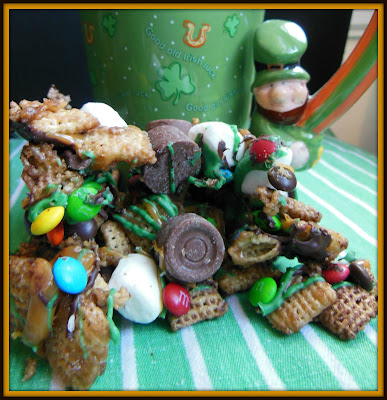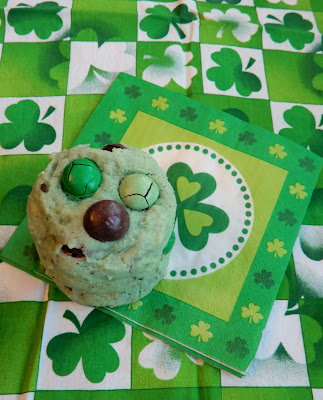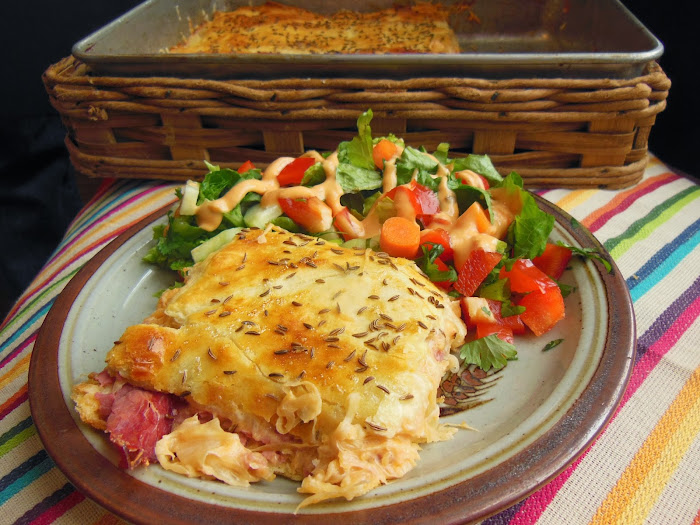Top o' the mornin' to you! This is your friendly reminder that today is St. Patrick's Day. A lot of elementary school students will avoid the inevitable pinch for forgetting their green today, since many are on spring break this week.
My childhood breakfast table was usually the site of my first pinch of the day, back in my elementary school days. Unless I searched my pajama wardrobe or underwear drawer for a hint of green among floral prints as I went to bed on March 16, I could usually count on one of my siblings to provide the first pinch of the day as we consumed our bowl of Lucky Charms. (It may have been Frosted Flakes or Sugar Smacks or Apple Jacks cereal, but those don't sound as leprechaun-inspired, do they?)
Today's recipe calls for a "pinch" of a different kind - or, more accurately - a measured amount of baking soda. Irish Bread is one of the hallmarks from the Emerald Isle. It's a quick bread that uses soda, rather than yeast, for leavening.
However, the website www.myrecipes.com says that the Irish bakers weren't the first cooks to use soda to leaven bread. American Indians first used pearl ash—a natural form of soda created from the ashes of wood—to leaven their breads without the presence of yeast. However, it wasn’t until this process was later discovered and replicated by the Irish that it earned a reputation worldwide.
Irish Soda Bread was first created in the late 1830s, when the first iteration of baking soda—or bicarbonate soda—was introduced to the United Kingdom. The first versions were created out of necessity. Irish cooks were having trouble finding quality flour, since Ireland's climate raises a lower-gluten variety of wheat than we're known for here in the heart of Kansas. The soda was added to other basic ingredients, like the “soft” wheat flour, salt, and soured milk.
At the time, many lower-class and farmhouse kitchens lacked ovens, so the bread was cooked in iron pots or on griddles over open hearths. This cooking method resulted in the signature dense texture, hard crust, and slight sourness that's characteristic for soda bread. The unique texture of this bread is the result of a reaction between acid and baking soda that results in the formation of small bubbles of carbon dioxide within the dough. Sour milk was most commonly used in the early days of the bread’s history, thanks to its high acidity levels, but now buttermilk is typically used in its place.
The bread traditionally has a cross cut into the top before baking.Other fun St. Patrick Day ideas, especially for kids:
- Take 2 refrigerated biscuits per child and tear each in half. Place three of the pieces together to form a shamrock and use the other one to roll into a stem. Sprinkle with green sugar and bake.
- Another easy green treat: Combine equal parts cream cheese and marshmallow cream. Tint green and serve as dip for green apples.
- Gold Cookies (for the pot of gold at the end of the rainbow!): Take two Ritz crackers. Put peanut butter between them. Dip them in melted butterscotch chips. Place on waxed paper until set up.
- Substitute Lucky Charms for some (or all) of the cereal in your Rice Krispie treats.
***
And, if you're looking for other lucky treats, here are some other St. Patty's Day foods I've shared here in the past:
Kinley and Brooke helped me make these Mint Chocolate Chip Cookies when they were visiting a couple years ago:
For cabbage minus the corned beef, try this slaw recipe:
And nothing but happiness come through your door.







